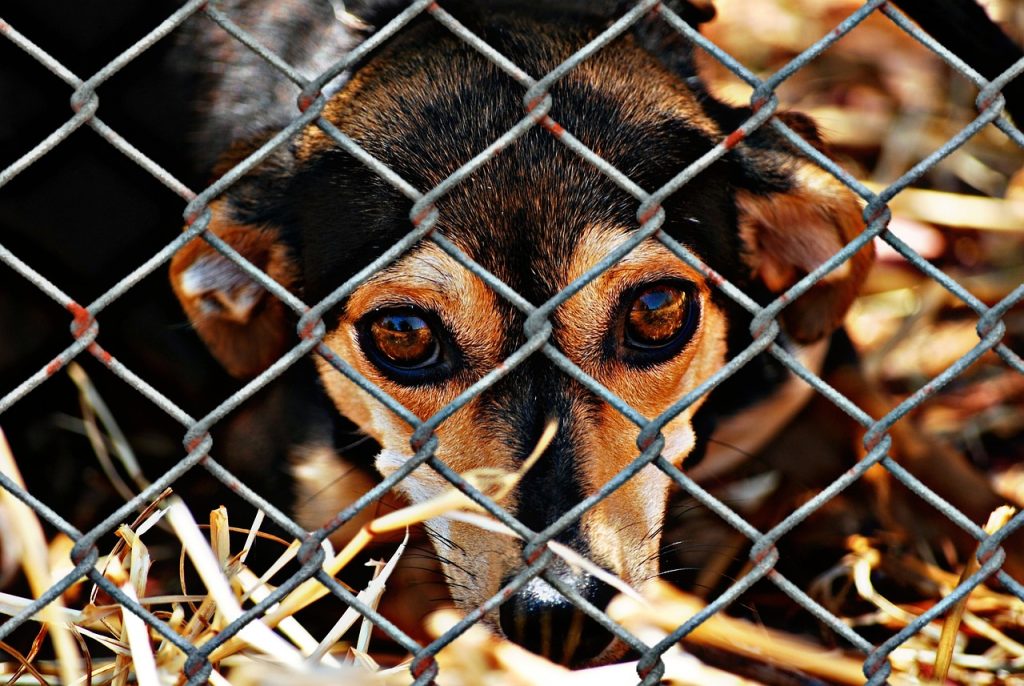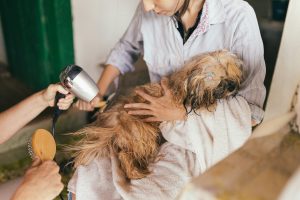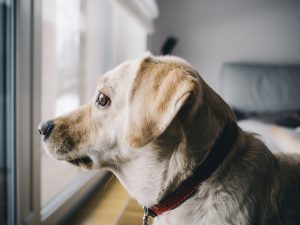
15 Gentle Rescue Dog Apartment Tips to Help Them Adjust Smoothly
Bringing home a rescue dog is a beautiful and life-changing decision—but when you live in an apartment, it comes with a unique set of challenges. Unlike puppies raised in a predictable home, many rescue dogs have unknown histories, past trauma, or simply need extra time and space to feel safe. That’s where the right rescue dog apartment tips can make all the difference.
Whether your new dog is shy, reactive, or just unsure of city life, this guide will help you build trust slowly, avoid common setbacks, and create a calming routine that works for both of you. From safe zones to gentle exposure plans, we’ve compiled 15 actionable ways to help your rescue thrive in your apartment—one paw at a time.
1. Give Them One Room at First—Not the Whole Apartment
One of the most overlooked rescue dog apartment tips is to limit your new pup’s space in the beginning. Giving them the full run of your home can be overwhelming and may trigger anxiety. Instead, start with one quiet room—ideally one without much foot traffic or windows to the street.
Use baby gates or closed doors to block off other areas for now. Include a soft bed, water, a toy or two, and a crate (with the door open) if you’re crate training. This “safe zone” helps them decompress, observe their new world gradually, and build confidence before exploring more.
The first few days are crucial. This 3-day transition guide shares helpful reminders about why slow introductions matter more than training in the first week.
2. Follow the 3-3-3 Rule for New Rescue Dogs
The “3-3-3 Rule” is a helpful framework for understanding a rescue dog’s emotional timeline: 3 days to decompress, 3 weeks to begin adjusting, and 3 months to feel truly at home. During those early days in your apartment, keep things calm and consistent.
Avoid introducing new people, taking long outings, or rushing obedience training. Focus instead on basic care, soft routines, and letting your dog observe their surroundings. Trust is built over time, not in a single walk or treat session.
For more on this approach, the ASPCA’s rescue care page offers valuable context and gentle onboarding suggestions.
3. Create Predictable Routines for Meals, Potty, and Rest
Dogs thrive on routine—especially those recovering from change or trauma. A predictable daily schedule gives your rescue dog a sense of security and control. Keep meal times, potty breaks, walks, and rest periods as consistent as possible (even on weekends).
Use the same door for walks, the same verbal cues for potty, and feed in the same spot each day. The less guesswork your dog has to do, the faster they’ll settle in. Apartment dogs in particular benefit from knowing when and where the action happens.
If you need help mapping out a simple routine in a small space, our post on daily routines for apartment dogs has helpful scheduling ideas.
4. Set Up a Crate (or Covered Den) as a Safe Retreat
Many rescue dogs feel safer when they have a cozy retreat they can call their own. A covered crate, quiet closet nook, or soft-sided den provides a place to decompress and observe from a distance. In an apartment, this helps reduce overstimulation from noises and movement.
Leave the crate door open and never use it for punishment. Add a familiar-scented blanket or worn T-shirt so they associate it with comfort. Some dogs may need weeks before entering on their own—just keep it available as an option.
Not sure how to introduce the crate gently? Our full post on crate training in apartments shares positive steps that won’t overwhelm sensitive pups.
5. Keep Visitors and Noise to a Minimum
Many rescue dogs struggle with overstimulation—especially in a new apartment filled with strange smells and sounds. During the first few weeks, avoid inviting friends over or exposing your dog to hallway chaos, loud music, or unpredictable activity.
If you live with roommates, ask them to keep things quiet and minimize foot traffic. Let your dog meet new people slowly, from a distance, and only when they’re showing calm interest. Every positive first impression builds confidence for future interactions.
If noise from neighbors or outside triggers fear responses, see our guide on helping pets with thunderstorm anxiety. The same desensitization tips work indoors, too.
6. Use Leash Walks as Calm Bonding Time (Not Just Exercise)
For many rescue dogs, walks aren’t just potty breaks—they’re a chance to build trust and decompress. In an apartment, leash time may be one of the few controlled opportunities for gentle exploration. Go slowly, let them sniff, and avoid busy sidewalks or dog parks at first.
Focus on eye contact, soft voice praise, and giving them space to observe the world without pressure. If your dog freezes, bolts, or gets overwhelmed, retreat calmly and try again another day. Confidence is built in baby steps.
Want more on enrichment walks and pacing for anxious dogs? Our daily routine tips inside the Ultimate Apartment Dog Guide include walk planning that balances structure with freedom.
7. Avoid Over-Correcting or Over-Commanding
Your new rescue may not know the rules of your home—or any rules at all. While boundaries are important, avoid flooding them with commands or corrections in the first few weeks. Every “no” should be paired with a clear alternative and a calm tone.
Instead of saying “no” for jumping, say “sit” and reward the calmer option. If they bark at hallway noise, calmly redirect to a chew toy or lead them to their crate. Shouting, grabbing, or pushing will only erode the fragile trust you’re building.
Many rescues have been through stressful situations. Gentle communication and clear structure are far more effective than harsh discipline—especially in tight apartment quarters.
8. Use White Noise or Soothing Sounds to Mask Apartment Noises
Apartments come with their own soundtrack—elevators, foot traffic, doors slamming, neighbors chatting. For a rescue dog adjusting to unfamiliar territory, these sounds can be confusing or scary. White noise machines, calming music, or a fan can create an audio buffer and promote rest.
You can also use TV or radio at low volume during your absences to maintain a consistent sound environment. If your dog is noise-sensitive, avoid sudden exposure and introduce sounds gradually with lots of praise.
White noise is especially helpful for crate time, solo stays, and during storms or fireworks. See our post on thunderstorm anxiety for more sound desensitization techniques.
9. Reward Curiosity—but Don’t Force It
Every rescue dog is different—some warm up quickly, while others need weeks to show curiosity. If your dog begins to explore, sniff, or make eye contact, reward it with soft praise or a treat. This teaches them that gentle investigation leads to positive experiences.
But don’t try to speed things up. Forcing interactions with new objects, people, or places can backfire. Let your dog set the pace and celebrate the small wins—stepping into a new room, eating in your presence, or wagging when they hear your voice.
Trust is earned in moments of choice. The more autonomy you allow during early bonding, the stronger your relationship will be long term.
10. Offer Enrichment Without Overwhelm
Mental stimulation is essential—but too much at once can stress out a newly adopted dog. Start slow: a snuffle mat, frozen treat toy, or cardboard box filled with towels can be enough in the first week. Watch your dog’s body language for signs of fatigue or tension.
Keep enrichment sessions short and focused. Some dogs may ignore toys for days until they feel truly settled. Others may prefer food puzzles or low-key training games. Respect their learning curve and rotate options once trust deepens.
For safe DIY ideas suited to apartment dogs, we love the suggestions from Crafty Canine Club’s rescue dog guide.
11. Track Patterns to Identify Stress Triggers
Many rescue dogs display fear-based behaviors early on: barking at the door, pacing at night, or hiding during certain sounds. Rather than correcting the behavior directly, track what’s happening before and after. This can reveal patterns you can gently manage or train around.
Does your dog bark more during hallway activity? Are mealtimes too close to outdoor noise? Does grooming trigger anxiety? Once you spot a trigger, create a softer alternative: play music, feed in a quieter corner, or use calming scents near the crate.
Stress is communication. The better you read it, the faster your rescue dog can feel seen, understood, and safe in their new apartment home.
12. Reinforce Independence Early
Many adopted dogs become overly attached in the first few weeks—especially in small apartments where they can follow you everywhere. While closeness is important, reinforcing short periods of calm alone time helps prevent separation anxiety later.
Start with short absences while you’re still in the apartment. Let them rest behind a baby gate or in their crate while you shower or make dinner. Reward with a treat when they settle calmly. Gradually build up to leaving the apartment for brief outings.
A pet cam or baby monitor can help track progress. Independence is a skill—one your rescue dog will thank you for once daily life returns to normal.
13. Feed in a Quiet, Consistent Spot
Some rescue dogs have food anxiety or resource guarding due to past experiences. Help them feel secure by feeding in the same location every day—preferably in a low-traffic corner where they won’t be startled or bumped.
Use a non-slip mat under the bowls and keep mealtimes predictable. If your dog is hesitant to eat, sit nearby quietly without staring. Avoid rushing or coaxing—patience and consistency will help them feel in control.
If your apartment is tight on space, even a laundry nook or bedroom corner can become a secure feeding station with the right setup.
14. Avoid “Testing” Your Dog with New Stimuli Too Soon
Many adopters want to see how their new dog reacts to other dogs, strangers, or loud city life—but testing their tolerance too early can set back progress. Let your dog adjust to your apartment before introducing elevators, busy sidewalks, or dog-friendly cafés.
Instead, focus on low-pressure bonding at home. Watch how they respond to daily routines before expanding their world. Pushing them before they’re ready can result in fearful behavior that’s harder to undo.
You’ll have years together—there’s no rush. Let your rescue lead the way when they’re ready to explore more of their new life.
15. Celebrate Small Wins and Give Yourself Grace
Adjusting to apartment life with a rescue dog isn’t linear. There will be progress, setbacks, and moments of doubt. But every tiny success—an unprompted sit, a relaxed nap, a tail wag at the door—is worth celebrating.
Don’t compare your journey to others’. Some dogs settle in a week, others take months. What matters most is showing up with patience, love, and the willingness to learn together.
And if you ever need a refresher, the ASPCA's general dog care guide is a great resource for getting back to basics when things feel overwhelming.
Final Thoughts
Rescue dogs bring something special to every home—and when that home is an apartment, your love and guidance mean even more. With a calm routine, safe space, and a whole lot of patience, your new pup can thrive in their new life.
Remember: healing takes time. But the quiet, joyful moments you build together will lay the foundation for a bond stronger than any past your dog has lived through. You’ve got this—and they’ve got you.
Frequently Asked Questions
How long does it take a rescue dog to adjust to apartment life?
Every dog is different, but most rescue dogs need 3–6 weeks to start feeling secure. Some may take several months to fully settle. Patience, consistency, and gentle routines help them adjust more smoothly.
What should I avoid doing in the first week with a rescue dog?
Avoid overwhelming your dog with new people, busy places, or forced interaction. Skip the dog parks, house parties, or crowded walks early on. Focus on creating safety and predictability inside your apartment first.
Can I crate train a rescue dog in a small apartment?
Yes—crate training is one of the most helpful tools for rescue dogs. It offers them a secure retreat, especially in small spaces. Use positive reinforcement and never force them inside. Our crate training guide offers gentle strategies tailored for apartment setups.
How do I know if my rescue dog is stressed in the apartment?
Common signs include panting, hiding, pacing, barking at sounds, or refusing food. Watch for body language like tucked tails, pinned ears, or wide eyes. If you notice patterns, adjust your routine and provide calm reassurance.
Are rescue dogs harder to train than puppies?
Not necessarily. While some may carry trauma or habits from their past, many rescue dogs are eager to learn and bond. They often thrive with patient, positive training. Start small and build trust—you may be surprised how quickly they bloom.

Join the Busy Pet Parent Newsletter!
Get easy routines, time-saving tips, and the latest gear reviews—delivered straight to your inbox.
Perfect for busy pet owners, apartment dwellers, and anyone who wants a happy, healthy companion (without the stress).
Exclusive guides & checklists
Product recommendations & deals
No spam—unsubscribe anytime!




